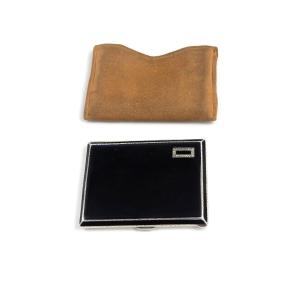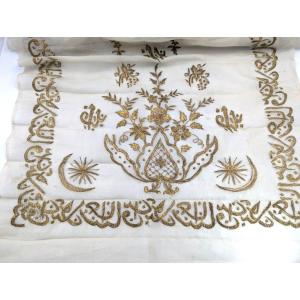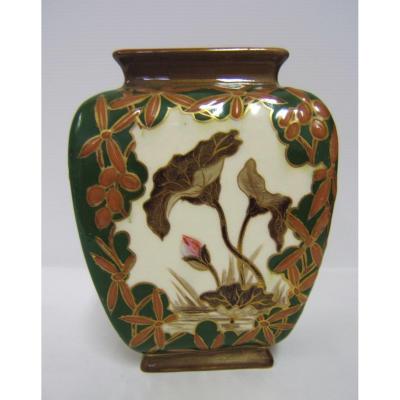This French tin-glazed earthenware flask features four handles and is decorated with hand-painted blue and green scrolling flowers, vines, seated winged figures, and a gilded upper rim. Historically, these decorations, known as "grotesques," originated from the fantastical paintings that adorned the walls and ceilings of ancient Roman palaces.
The original design of this flask was created by Masseot Abaquesne (c. 1500-1564), a faience manufacturer from Rouen, France, who was active between 1535 and 1557. He is renowned for the remarkable paving in the Château d'Écouen, which has been attributed to both Luca della Robbia and Palissy. Abaquesne also produced a large number of pharmacy jars. The faience industry in Rouen, considered the most important and oldest ceramics center in France, began in the 16th century with Masseot Abaquesne, a native of Cherbourg and France's first grand-maître faïencier. Abaquesne was likely introduced to earthenware by the sculptor and architect Girolamo della Robbia, son of the famous Florentine ceramist, during their collaboration on the construction of the now-destroyed Château de Madrid (located in the Bois de Boulogne in Paris), which was built under the orders of Francis I.
Masseot Abaquesne worked for many notable figures of the time, particularly for the French Constable Anne de Montmorency, a great lover of ceramics, who commissioned several series of panels and pavements from him for his Château d'Écouen (1542). These works depicted historiated scenes, arabesque motifs, emblems, and coats of arms in blue, yellow, green, and violet. According to some sources, a flask of this type belonged to the Abbot of Lisieux around 1545. A similar piece with grotesque decoration on a white background is displayed in the Musée de la Céramique in Sèvres, Paris.
Our product is crafted in the style of this historic flask. It is a 19th-century reproduction of the highest quality and is itself a collector's item.
Dimensions:
Height: 31 cm
Width: 22 cm
Depth: 20 cm
Weight: 2060 grams
The vase is in splendid antique condition. Please examine the accompanying photographs carefully, as they form an integral part of this description. The item will be shipped with full tracking and insurance. Please note that shipping costs include labor, packaging, and postage.

















































 Le Magazine de PROANTIC
Le Magazine de PROANTIC TRÉSORS Magazine
TRÉSORS Magazine Rivista Artiquariato
Rivista Artiquariato